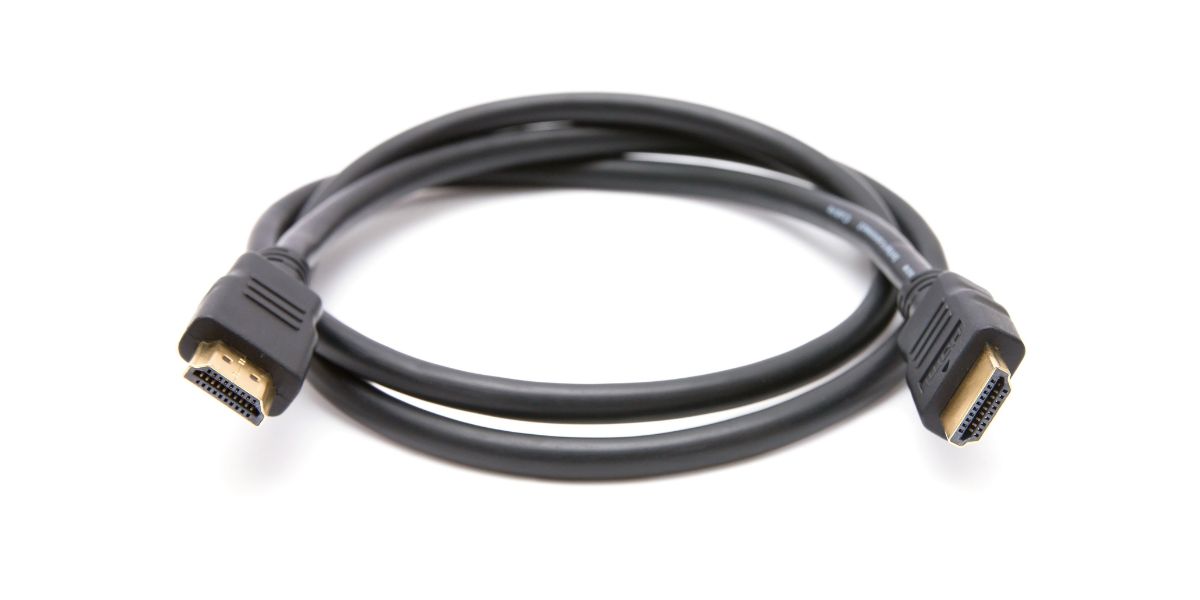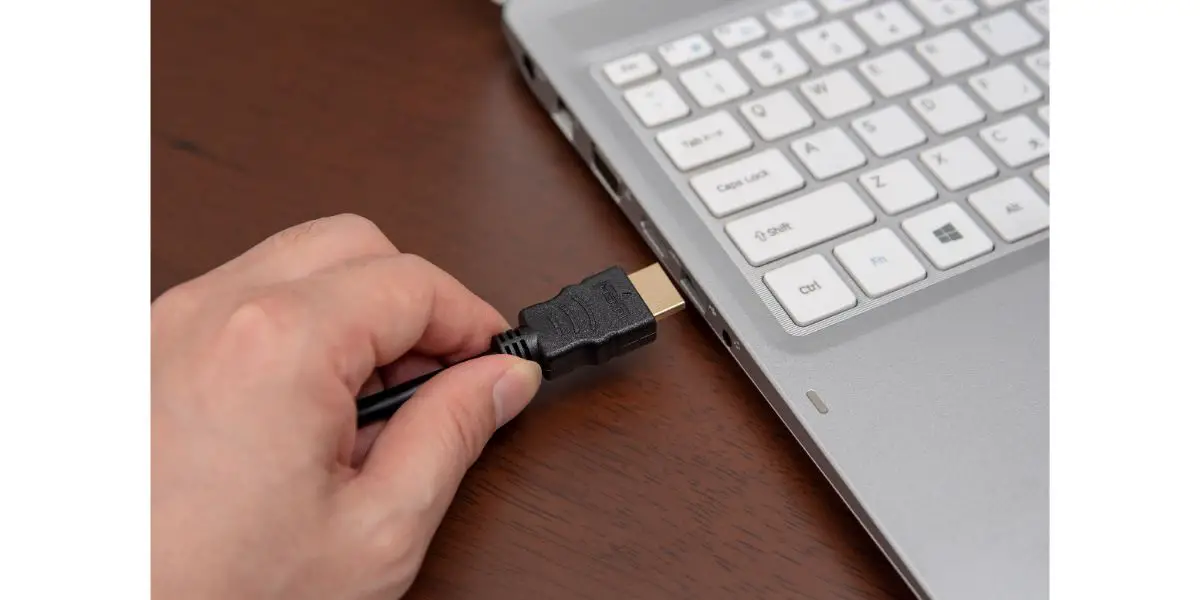Disclaimer: This post may contain affiliate links, meaning we get a small commission if you make a purchase through our links, at no cost to you. For more information, please visit our Disclaimer Page.
HDMI cables have come a long way and if you haven’t been keeping up with the latest technology, you might not realize that the HDMI cables of today are far more advanced than they were just 5 years ago. Despite those advancements, HDMI cables can still go bad.
In fact, a bad HDMI cable that still functions is capable of causing pixelation on your HDTV. Whether you have a very high-end, premium HDMI cable connected to an 8k TV or a bottom-of-the-barrel HDMI cable connected to a 720p monitor, bad HDMI cables cause problems.
For most, it’s enough to know that the cable is bad, so it’s time to head to the store or jump on Amazon and order a brand-new one. HDMI cables are one of those items where the saying “you get what you pay for” truly applies.
Table of Contents
How Does a Bad HDMI Cable Cause Pixelation?
A bad HDMI cable can cause all kinds of problems without being completely broken and non-functional. As thick and hefty as good HDMI cables mostly are, they are still vulnerable to some of the things that affect other, smaller cables.
Now, keep in mind, HDMI cables aren’t as vulnerable and weak as fiber lines or anything like that, but you can still damage one without realizing you did so.
- Are there a lot of tight loops in the cable?
- Is there a crimp in the cable anywhere along its length?
- Does the cable look twisted like a Twizzler?
- How do the connectors in the male end of the cable look?
- How large is the insulator hood over the male connector?
Crimped, twisted, or otherwise bent HDMI cables cause damage to the vulnerable wiring within, disrupting and even severing signal altogether. An HDMI cable is just like any other electrical cable—it requires a closed circuit to function.
A closed circuit is an uninterrupted channel through which electricity flows. Open the circuit and you shut down the pathway. When you flick a light on, the light switch connects a metal plate to the end of a live wire traveling from your circuit breaker panel. This closes the circuit.
The same holds true for an HDMI cable. If it’s bent, stepped on, or twisted enough, it might sever the wiring within, though the exterior looks okay.
The pixelation is due to a closed circuit that has a diminished capacity, meaning the signal cannot flow from one end to the other cleanly.
How to Determine if it’s Your HDMI Cable?
Well, the first thing you should do is ask and answer all of the questions in the above bullet points. However, it might not be the cable at all. Remember, there are two ports as well. One port runs from the connecting device and one port on the TV, gaming monitor, or standard monitor.
It could even be a matter of dirt or debris jammed into or around the pins inside the male connector or the ports. It’s always a good idea to rule out the devices being connected as well as ruling out the HDMI cable.
Another thing you should consider is the quality of the HDMI cable. A cheap HDMI should be able to handle a simple, 720p or 1080p HDTV, so long as that’s all there is to it. However, using that same cable on a 4k, 8k, or gaming monitor with a massive refresh rate might present some problems.
Types of HDMI Cables
It’s common for people to just grab an HDMI cable that’s laying around in a drawer somewhere and hook it into two brand-new devices. Overly excited about that PS5? That’s great but don’t use a 10-year-old HDMI cable on it. There are multiple HDMI capabilities to consider as well.
- Standard HDMI Cables
- Standard HDMI Cables with Ethernet
- Automotive HDMI Cables
- High-Speed HDMI Cables
- High-Speed HDMI Cables with Ethernet
- High-Speed Automotive HDMI Cables
- Premium High-Speed HDMI Cables
- Ultra-High Speed HDMI Cables
Those are more like adjectives, describing the capabilities of a given HDMI cable. Then there are HDMI cable types.
- HDMI Type-A
- HDMI Type-B
- HDMI Type-C
- HDMI Type-D
- HDMI Type-E
Type A
Type A HDMI cables are probably the most common HDMI cables around. They are mostly used for HDTVs, connecting gaming systems, and computer monitors.
Type B
You don’t have to worry about running into any of these at the moment, since they are not sold on the market, at least not for residential purposes.
Type C
HDMI C cables are miniature versions of the standard sizes. They are capable of most of the things a standard HDMI cable is capable of but only for smaller and more portable devices.
Type D
Again, another mini-HDMI cable. The only difference between this one and a Type C is the Type D is even smaller, often referred to as a micro-HDMI cable.
Type E
Type E HDMI cables are entirely for automotive uses.
How to Ensure You Have the Right HDMI for Your Device?
This is the real question. If you unpacked a gaming monitor or forked over a fortune for an 8k curved display, you don’t want to order the $5.99 HDMI deal on Amazon. It’s very important to read the packaging before you make your purchase.
Your HDMI’s capabilities will be listed on the package and can easily be compared to the new device. For instance, let’s say you just purchased a next-gen gaming system or a medium to high-end gaming PC, along with a nice gaming monitor or 4k TV with a high refresh rate.
All of that mumbo jumbo means that there will be a ton of data flying back and forth inside that HDMI cable and you want to get your hands on the best of the best. HDMI 2.1A is best for these kinds of applications.
It can handle up to 8k resolutions, nearly 50 gigs per second (Gps), and up to a 240Hz refresh rate. If all you’re doing is dragging out your old, LG plasma TV from back in the day, a standard, HDMI 1.0 or 1.2a is more than enough to get the job done.
The best way to decide which HDMI cable to purchase is to carefully pay attention to the device specs and match them with the appropriate HDMI cable. At the end of the day, a bad HDMI cable will create pixelation and so will an HDMI cable that’s not up to par with your device.
Remember, when it comes to HDMI cables, there are capabilities and then there are types. Find the right type for your device, then scan through the capabilities of the HDMI cable as it relates to the specs of your device. If you follow that general rule of thumb, you won’t have to worry too much.
Take good care of your HDMI cable too. While most of them are pretty sturdy, a single crimp is capable of doing a lot of harm to the cable, ruining the overall experience for you.
Final Thoughts
HDMI cables have followed a pretty linear path in their technological progression. If you’re dealing with pixelation on one of your monitors or TV, it could be because the HDMI cable simply isn’t up to snuff or it’s been damaged somehow.
The best thing you can do is make sure that your HDMI cable is well taken care of, not overly long for no reason, and is the right HDMI cable to handle the job it’s intended for.


